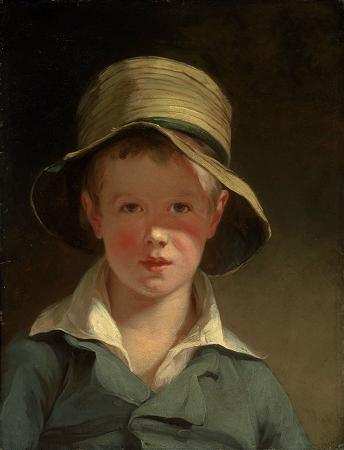Hat. A hat is a head covering which is worn for various reasons, including protection against weather conditions, ceremonial reasons such as university graduation, religious reasons, safety, or as a fashion accessory. Hats which incorporate mechanical features, such as visors, spikes, flaps, braces or beer holders shade into the broader category of headgear. In the past, hats were an indicator of social status. In the military, hats may denote nationality, branch of service, rank or regiment. Police typically wear distinctive hats such as peaked caps or brimmed hats, such as those worn by the Royal Canadian Mounted Police. Some hats have a protective function. As examples, the hard hat protects construction workers' heads from injury by falling objects, a British police Custodian helmet protects the officer's head, a sun hat shades the face and shoulders from the sun, a cowboy hat protects against sun and rain and an ushanka fur hat with fold-down earflaps keeps the head and ears warm. Some hats are worn for ceremonial purposes, such as the mortarboard, which is worn during university graduation ceremonies. Some hats are worn by members of a certain profession, such as the Toque worn by chefs, or the mitre worn by Christian bishops. Adherents of certain religions regularly wear hats, such as the turban worn by Sikhs, or the church hat that is worn as a headcovering by Christian women during prayer and worship. The 27,000-to-30,000-year-old Venus of Willendorf may depict a woman wearing a woven hat. While there are not many official records of hats before 3,000 BC, they probably were commonplace before that. The 27,000-to-30,000-year-old Venus of Willendorf figurine may depict a woman wearing a woven hat. One of the earliest known confirmed hats was worn by a Bronze Age man whose body was found frozen in a mountain between Austria and Italy, where he had been since around 3250 BC. He was found wearing a bearskin cap with a chin strap, made of several hides stitched together, essentially resembling a Russian fur hat without the flaps. One of the first pictorial depictions of a hat appears in a tomb painting from Thebes, Egypt, which shows a man wearing a conical straw hat, dated to around 3200 BC. Hats were commonly worn in ancient Egypt. Many upper-class Egyptians shaved their heads, then covered it in a headdress intended to help them keep cool. Ancient Mesopotamians often wore conical hats or ones shaped somewhat like an inverted vase. Hats as an indicator of social status: a foreman wears a hat of greater height than the accompanying inquilino. Other early hats include the Pileus, a simple skull-like cap; the Phrygian cap, worn by freed slaves in Greece and Rome; and the Greek petasos, the first known hat with a brim. Women wore veils, kerchiefs, hoods, caps and wimples. St. Clement, the patron saint of felt hatmakers, is said to have discovered felt when he filled his sandals with flax fibers to protect his feet, around 800 AD. In the Middle Ages, hats were a marker of social status and used to single out certain groups. The 1215 Fourth Council of the Lateran required that all Jews identify themselves by wearing the Judenhat, marking them as targets for anti-Semitism. The hats were usually yellow and were either pointed or square. Carle Vernet's 1796 painting showing two decadent French Incredibles greeting each other, one with what appears to be a top hat, perhaps its first recorded appearance. In the Middle Ages, hats for women ranged from simple scarves to elaborate hennin, and denoted social status. Structured hats for women similar to those of male courtiers began to be worn in the late 16th century. The term 'milliner' comes from the Italian city of Milan, where the best quality hats were made in the 18th century. Millinery was traditionally a woman's occupation, with the milliner not only creating hats and bonnets but also choosing lace, trimmings and accessories to complete an outfit. Left-to-right: Top-hat, peaked cap, Borsalino, bowler hat. In the first half of the 19th century, women wore bonnets that gradually became larger, decorated with ribbons, flowers, feathers, and gauze trims. By the end of the century, many other styles were introduced, among them hats with wide brims and flat crowns, the flower pot and the toque. By the middle of the 1920s, when women began to cut their hair short, they chose hats that hugged the head like a helmet. The tradition of wearing hats to horse racing events began at the Royal Ascot in Britain, which maintains a strict dress code.
more...














